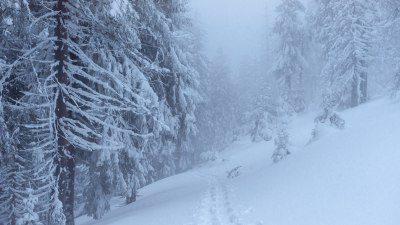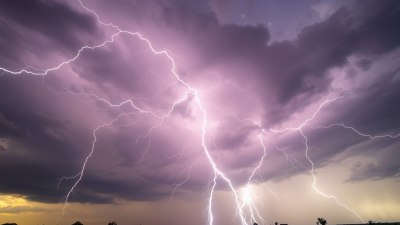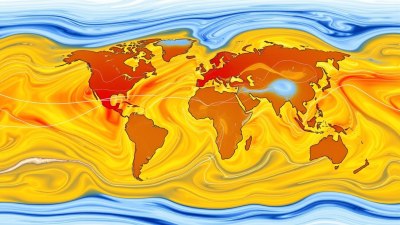How Blizzards Form and Why They Can Happen Suddenly
Discover the science behind blizzards, their formation, and sudden occurrence. Learn how weather systems create these extreme winter storms.

Blizzards are fierce winter storms that bring heavy snowfall, strong winds, and reduced visibility. The National Weather Service defines a blizzard as a storm that results in winds of at least 35 mph and substantial snowfall, which in combination can lead to dangerous conditions. Understanding how blizzards form and why they can occur suddenly is crucial for individuals living in areas prone to winter weather. In this article, we will explore the meteorological conditions that lead to these storms, the anatomy of a blizzard, and the reasons behind their abrupt onset.
What Conditions Create a Blizzard?
Blizzard formation hinges on several key weather phenomena, primarily the presence of cold air, moisture, and lift. It all begins with a clash of air masses: a cold, dry air mass from the north meets a warmer, moist air mass from the south. This interaction occurs in regions where cold fronts or low-pressure systems are prevalent. The warm air rises over the cold air, leading to condensation and cloud formation. As the process continues, precipitation begins to fall in the form of snow.
The Role of Temperature and Moisture
For a blizzard to occur, temperatures must be low enough that moisture in the air condenses into ice crystal formations. These crystals aggregate to create snowflakes, which can become heavy under the right conditions. The amount of moisture in the atmosphere directly impacts snowfall amounts; a saturated air mass can lead to significantly higher snowfall rates, enhancing the severity of the blizzard.
Pressure Systems and Blizzards
Low-pressure systems are often the primary drivers of blizzards. These systems typically move eastward and can bring substantial snowfall when moving into colder regions. As air rises in a low-pressure system, it cools, potentially resulting in heavy snowfall if it meets the necessary conditions for precipitation. High-pressure systems can create the cold and dry conditions that are essential for developing blizzards, resulting in stark contrasts between them and the surrounding low-pressure systems.
The Influence of Geography
Geographical factors also play a significant role in the formation of blizzards. Regions that are closer to bodies of water experience larger snowfall amounts due to lake-effect snow, which occurs when cold winds pass over warmer lake waters. The air picks up moisture, which condenses as it reaches the colder landmass, resulting in snow showers that can escalate into blizzard conditions under the right circumstances.
How Blizzards Can Happen Suddenly
One of the most perplexing aspects of blizzards is their sudden onset. These storms often develop rapidly due to several factors, including shifts in wind patterns, temperature changes, and the unpredictability of weather systems. A seemingly benign winter day can quickly turn into a blizzard under the right conditions.
The Role of Weather Forecasting
Modern meteorology aims to predict blizzard conditions through advanced weather modeling and observation techniques. However, certain changes in the atmosphere can occur abruptly, catching even the most sophisticated forecasts off guard. For example, the rapid intensification of a low-pressure system can lead to sudden snow accumulation and increasing wind speeds, often with little warning.
Instability and the Development of Severe Weather
Atmospheric instability is another factor that can trigger sudden blizzards. When warm air rises rapidly in a colder environment, it can create severe weather conditions, including strong winds and heavy snowfall. This instability can lead to the rapid development of storm systems capable of delivering blizzard conditions.
The Impact of Climate Change
Climate change can also influence the frequency and intensity of blizzards. Warmer overall temperatures can lead to increased moisture in the atmosphere, which is conducive to heavy snowfall. As climate patterns shift, regions that historically have been less prone to blizzards may begin experiencing these winter storms more frequently. Understanding climate change’s impact on winter weather is essential for predicting future storm patterns.
Preparation and Safety During a Blizzard
When blizzard warnings are issued, preparation is key to ensuring safety. It’s essential to have an emergency kit that includes food, water, medications, and other necessary supplies. Staying informed through weather alerts and forecasts can help individuals prepare in advance for potential blizzard conditions.
What to Do When a Blizzard Strikes
During a blizzard, it’s crucial to stay indoors and avoid travel unless absolutely necessary. If travel is unavoidable, ensure your vehicle is equipped with a winter emergency kit, including blankets, a flashlight, extra clothing, and a shovel. Remaining cautious and aware of changing weather conditions can significantly increase safety during such events.
The Aftermath of a Blizzard
Once a blizzard has passed, the cleanup process begins. Snow removal becomes a priority for municipalities and residents alike. Depending on the severity of the storm, the aftermath can vary dramatically, from minor inconveniences to significant disruptions in transportation and daily life. Understanding the characteristics of blizzards is vital for efficiently responding to their aftermath.
The Science Behind Blizzard Predictions
Scientists continue to improve their understanding of blizzard prediction through the use of technology, data analysis, and advanced computer models. Collaborations between meteorologists and climatologists enhance the accuracy of forecasts, helping communities prepare for winter weather. By leveraging technology and research, scientists aim to provide timely warnings that save lives during blizzard events.
Conclusively Understanding Blizzards
In summary, blizzards are complex phenomena influenced by various atmospheric factors, geography, and advancement in weather forecasting. Their rapid onset can catch individuals off-guard, emphasizing the importance of preparedness and awareness. As climate change continues to transform weather patterns, further research will be necessary to understand and predict future blizzard events in a changing environment.











